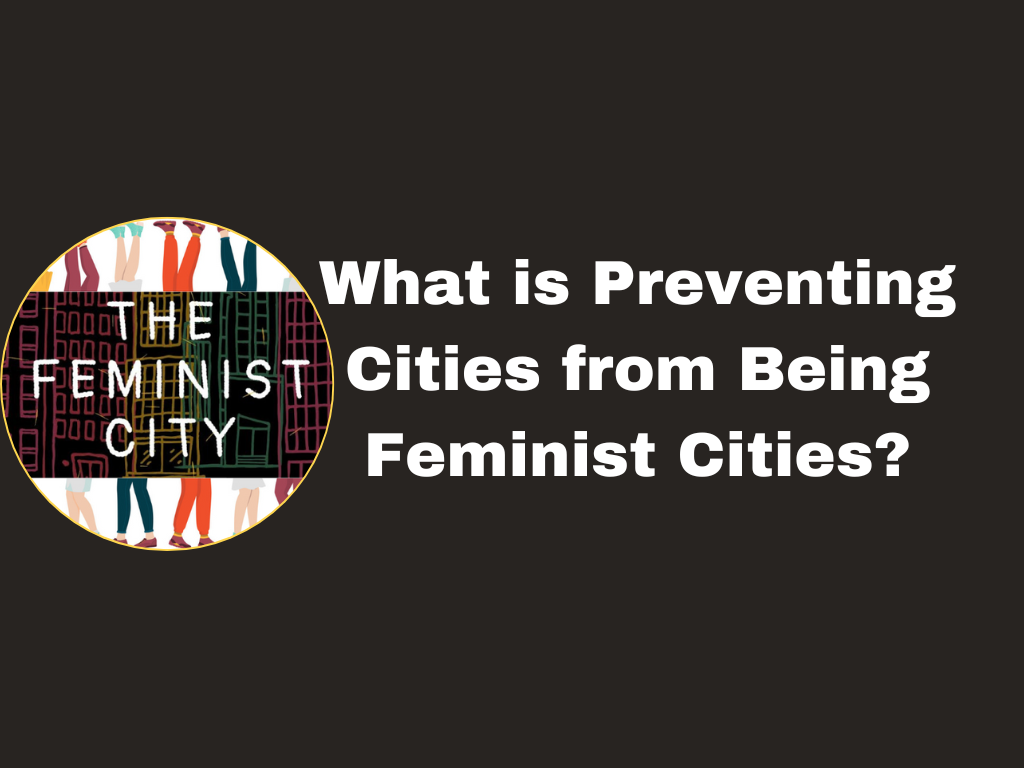
To clarify, the term “gender mainstreaming” is used instead of “feminist” because the term “feminist” carries negative connotations and is often misunderstood. However, the reasons behind this stigma are beyond the scope of our current discussion and would require more in-depth exploration!!
What are the challenges that I, personally, believe impede the incorporation of gender mainstreaming guidelines into urban planning and design in cities?
The implementation of gender mainstreaming guidelines may require changes to existing policies, practices, and attitudes, which can be met with resistance. Some stakeholders, including decision-makers, planners, and community members, may be hesitant to embrace change or may not fully comprehend the value of gender mainstreaming, which can create significant obstacles to progress.
Political will and leadership are crucial for implementing gender mainstreaming guidelines effectively. Without the support of decision-makers, it may be challenging to bring about meaningful change in urban planning and design that incorporates gender-sensitive approaches.
The implementation of gender mainstreaming guidelines requires essential resources, including funding, staff time, and expertise. Cities with limited resources may struggle to allocate the necessary resources to implement gender mainstreaming guidelines effectively, which can hinder progress in this area.
Gender mainstreaming requires data on the needs and experiences of different groups in the community. However, cities may lack data on the needs and experiences of women and other marginalized groups, making it difficult to identify and address gender inequalities in urban spaces.
When I published the topic for debate, I received valuable insights from brilliant women working on gender-sensitive approaches to urban planning and design. One of the issues that came up was political resistance, which can hinder progress in this area. Karen Whybro, who is working on creating safe spaces for women in public, shared her observations of resistance between city and borough councils that have different leadership in her local context. She noted that many Conservative councils may be hesitant to use the term “feminist” in their positioning, which can create barriers to implementing gender-sensitive approaches in urban planning and design.
Another addition According to Annette Priyadarshini, an urbanist and sustainability strategist, institutional structures that are often separate and hierarchical, and the lack of innovative governance solutions pose significant barriers to fully embracing and integrating gender-sensitive values into city building. This is one of the reasons why, despite the substantial interest in gender mainstreaming, we often only see smaller feminist projects or interventions, and rarely witness actionable planning or policymaking toward the cause.
While Lucia Schlemmer, a Sustainable and Inclusive Mobility Consultant, raises the question of whether a lack of awareness is also a contributing factor to the underrepresentation of gender-sensitive approaches in urban planning and design.
Join the discussion and share your personal experiences with cities, as well as your thoughts on the barriers preventing them from becoming feminist ones. All insights and perspectives are valuable and can contribute to a more comprehensive understanding.

Feminist Urbanist
Founder of GamingX
Ph.D. Candidate with the scope of sustainable communities, resilient cities, and social inclusivity
A Think-Tank which is dedicated to promoting community development and empowering marginalized groups through the creation of play spaces and active urban places in the city. Their work encompasses an exploration of gender-sensitive design practices and theories, operating at the intersection of gender, identity, urban space, and advocacy.
Please contact us if you wish to know about Empowering Women Public Space & Climate Change or just want to say Hello!